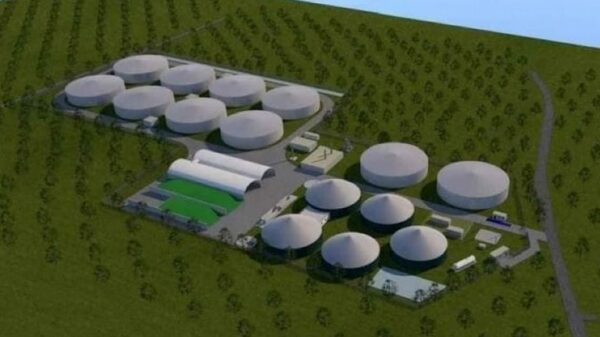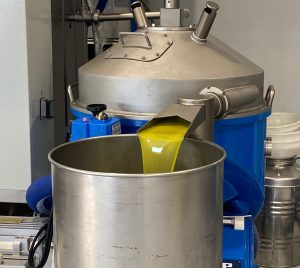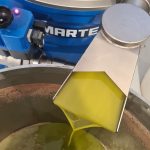We just touch the 170 thousand tons of oil produced in Italy until today, with by now few regions – albeit the most suitable ones – that have mills still at work. The picture that emerges confirms the pessimistic estimates (perhaps even worse than -37% compared to the past campaign) and outlines aItaly divided in half: center-north with production in strong growth, South with significant lossesespecially in some territories. Here, exclusively for Olive News, the official data on the amount of olives harvested, oil produced and yield percentages region by region, compared to last year's campaign.
Sardinia - 30 tons of olives are harvested, with 4.466 tons of oil (there were 3.200 last year). As for the yields, range between 14,2 of the province of Nuoro and 16,6 of that of Oristano.
Sicily - 180 tons of olives were harvested, for 26.774 tons of oil, almost 9 less than last year. Agrigento is the most productive province (8.615 tons), followed by those of Trapani (6.344) and Palermo (4.023). The yields vary: ranging from 12,5% in the province of Ragusa, where the harvest was brought forward, to 17% in Messina.
Calabria - Perhaps the region that paid the dearest, together with Puglia, for the summer heat waves. Just over 82 tonnes collected for just 13 tonnes of oil, to date less than a third of the overall figure for the previous campaign which stood at over 41 tonnes. Yields that fluctuate, at the provincial level, between 15,5% in Vibo Valentia and 17,5% in Catanzaro.
Basilicata - Here too very low numbers: 12 thousand tons of olives harvested for 1.867 tons of oil produced, when last year it had exceeded 5.400. Yields at 15%.
Puglia - Some mills are still open here too, but we are on figures that confirm the disappointment of the producers: 430 tons of olives for 65 tons of oil produced. Compared to last year, almost 100 tons are still missing from the appeal. The province of Bat settles at 29 tons of oil (practically half compared to the end of the last campaign), followed by that of Bari at 21 tons, then Foggia and Brindisi with 11 and 8 tons of oil respectively. Yields between 12,5% in the province of Lecce and 15,8% in Bat.
Campania - The harvested olives reach 67 thousand tons, the production in oil is at 8.876. Considering that some mills are still working here, last year's 10 tons are not that far away. Half of the production is the prerogative of the province of Salerno with 4.614 tons, followed by that of Benevento with about 1.600. Yields between 11,7% in the Benevento area and 13,9% in the Salerno area.
Molise – Here too less dramatic data than the rest of the south: 26.700 tons of olives which produced 2.300 tons of oil, against 2.800 last year. An average yield of 15%.
Abruzzo - The situation is serious with less than half of last year's production: 32.500 tons of olives harvested, 4.874 tons of oil, against 10.199 in the previous campaign. The province of Chieti is confirmed as the most olive-growing with 2.300 tons. The average yield in the region was 15%.
Lazio - The trend change begins sharply. With the mills now almost all closed, the results are better than last year: 12.979 tons of oil produced, compared to 11.244 last year, thanks to 98 tons of olives harvested. Viterbo leads the most productive provinces with over 5 tons, followed by Rome with 3.440. Variable yields between 12,5% of the Viterbo area and 14% of the Rietino area.
Umbria - Production in Umbria grew by about 50%, going from 3.122 tons of oil last year to 4.652 this year, with 3.182 tons in the Perugia area. The olives harvested amounted to 33.742 with yields between 13 and 14%.
Brands - The region is paying for heat waves and drought, with 21.397 tons of olives, 2.867 tons of oil, 500 fewer than last year. Ancona with 726 and Macerata with 605 are the most productive provinces with variable yields between 12 and 8%.
Tuscany – The strong region of the best-known brand shines, Tuscan Igp Oil. A good 15.299 tons of oil, compared to last year which did not reach 10, compared to 111.625 tons of olives harvested and a variable yield between 1,3% in the province of Siena and 14,9% in that of Prato. In the Florentine area the greatest production with 4.238 tons of oil, followed by the Grosseto area with 3.100 and the Arezzo area with around 2.
Emilia Romagna - Better values than last year: 1.396 tons of oil (there were 1.047 in the previous campaign) with just over 10 tons of olives. Average yield at 13,9%-
Liguria - Liguria is also smiling, rising to 1.733 tons of oil against 1.372 last year. Over 9 thousand tons of olives harvested, yields that even reach 21% in the province of Imperia which collects over half of the regional production (the province of La Spezia stops at 15%).
Piedmont - The piece of land dedicated to olive growing produced 155 tons of olives, for 19 of oil compared to 9 last year. Yields at 13%.
Lombardy - We have a total of 805 tons of oil, of which 755 in the province of Brescia. Last year's darkness (142 tons of oil) is fortunately just a bad memory, thanks to 6 tons of olives harvested and an average yield of 13,4%.
Veneto - Production four times higher than last year: we are at 1.615 tons of oil, against 378. Over 11 tons of olives harvested. Yields ranging from 13,1% in the province of Vicenza to 16,1% in that of Padua.
Trentino - Niche production, but with more than satisfactory results: 440 tons compared to 86 last year, with 2,800 tons of olives which yielded 15,2%.
Friuli Venezia Giulia - Production practically doubled compared to the previous campaign: 122 tons of oil against 66, a yield of 13.5% of the 881 tons of olives harvested.
di



















